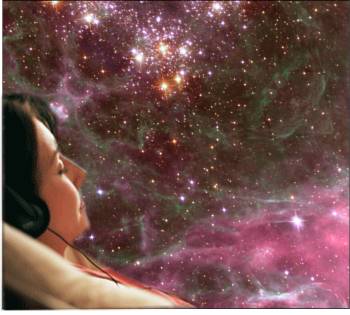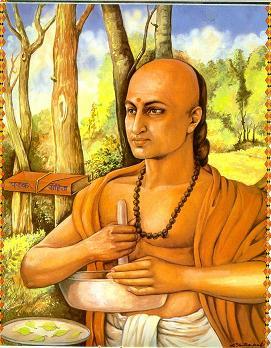Sleep
Āyurvedic interpretation of svapna (dream)
Editor’s note
The world of sleep and dreams has always fascinated the human mind. Apart from the fact that we spend nearly a third of our life in a state which we hardly know or have control upon, our sleep and dreams are doorways to mysterious worlds buried in realms that lie behind our waking state. The Upanishads speak of the fourfold Reality of which dream and sleep state are like two passages between and our waking self and the last doorway to the Beyond. It requires a deep occult and yogic knowledge to understand the deeper and subtler issues that these symbol worlds try to express. Meanwhile, we have a second-hand substitute for this now lost knowledge in a scientific understanding based on our material view of life and existence. In this regard, it is interesting to note what the ancient system of Āyurveda speaks upon the subject.
Introduction
The word ‘svapna’ has two meanings in Sanskrit: sleep and dream. Svapna (as sleep) is one of the three sub-pillars of life and detailed descriptions of it have been made in the Classics. Svapna (as dream) is a series of happenings which evolve in various stages of sleep. It is used as a diagnostic and prognostic tool in Āyurveda. A clinical analysis of dream, in Āyurvedic and classical literature, is the subject matter of this article.
Definitions
The primary meaning of the word svapna is sleep (1). Nidrā, śayana, svāpa, svapna, sṃaveśa (2) are synonyms. The word svapna has been used in the ‘sleep’ sense in different places in various texts (3). Its secondary meaning is ‘the subject’s’ experience in the different state of sleep (4), which is mentioned in various contexts and instances in the Caraka saṃhitā (5)1
As a tired mind becomes averted from the sense organs, it is subdued by tamas. Then man is overcome by sleep. During this time, both the raja (passion or illuminator) and the sattva (purity) are defeated by ignorance. The great sage Patanjali explained nidrā as abhāvapratyayālambanajavṛṭi2. Here the meaning of the word abhāva-pratyaya signifies ignorance, i.e. the absence of sattva and raja. Sleep is induced by the soul seeking asylum. Obstacles occur in the state of this abhāvapratyaya tamas stage of sleep. Nayana darśana explains nidrā as medhamānasaṁyoga1. Here the word is used to show an extreme ignorance of mind in the state of sleep. Acārya Suśruta has also supported this view (8).
Review
Jāgrata (wakefulness), svapna (sleep or dream) and suṣupti (deep sleep) are three states of being in man. Besides these three, the fourth turiya is acknowledged by the Upanishads (11).
The mind plays the primary role in the work carried out by our senses. On account of its mastery over the motor and sensory organs, it is called ‘antahkaraṇa’, i.e. the internal means or organ in Sanskit. According to Āyurveda, the mind remains beyond sense (12) and motor organs, functional in all states and is unsteady or inconstant. The function of mind never stops except in deep sleep (13) when it is completely influenced by tamas. But a complete cessation of wakefulness occurs rarely and the mind remains active due to some influence of passion (rajas) and purity (sattva) even in the sleeping state.
In the state of a minimally active mind, turned away from the external world, dreams occur. Success and failure, accuracy and incorrectness of dreams depend on the state of the mind. Some scholars opine that desires, suppressed excitement or thoughts which are not converted into action or words in the day, appear as dreams at night. But this alone is not true because it does not explain the presence of non-experienced and unseen subjects.
According to Acārya Caraka, in the absence of deep sleep, men see different types of fruitful and unfruitful dreams through the mind. The Vedanta physiology has supported the doctrine of Āyurveda by ‘jāgradvāsanāmayatvāt svapna (14)’. It opines that dreams are vāsanā (consciousness of past perceptions) or imaginations of the mind in a sleeping state resembling a stage of wakefulness.
Acārya Caraka has categorised seven types of dreams namely, dṛṣṭa, śruta, anubhūta, prārthita, kalpita, bhāvita and doṣaja (15) i.e. seen, heard, experienced, pictured for inner desires, created by the fancy, manifested and created by imbalance in the doṣas respectively. According to Āyurveda, the first five don’t signify any physical or mental disorders. Also, dreams in the first part of night usually do not have any great degree of meaning, whereas those in the latter part, or if the person is woken by the dream and cannot sleep again, have significance (16).
Dṛṣṭa is a dream of a thing seen previously in wakefulness (17). Perception of words, listened to in the sleeping state, is called a śruta dream (18). Feelings in sleep, when experienced by any sense organ, are termed anubhūta, i.e. experienced dreams (19). Desiring any listened or experienced thing which was earnestly desirable in wakefulness is called prārthita or desired dreams (20). Sometimes an assumption of things which are within the range of the senses happens in the mind as imaginations. These imaginations in sleep create kalpita dreams, i.e. imagined dreams (21). Those dreams in which what the person saw in sleep and actually happens, are called bhāvita or manifested dreams (22, 23). Astrological science has given detailed description of bhāvita svapna (24). According to it, dreams and signs are manifested on the palm on the basis of past deeds and are indicators of the good and bad (25). Dreams experienced in the vitiated state of vāta, pitta and kapha are called doṣaja.
According to Āyurveda, if a sick person perceives fearful dreams, he will die, whereas a healthy person will be afflicted with a dreadful disease (26).
Discussion
In Āyurveda, dreams are used for three purposes:
1. to indicate the state of the body,
2. to diagnose the state of disease and
3. to assess the prognosis of the disease
Perception of many dreams in which sleep is not profound (27) indicates a doṣaja (śarīrika and mānasika) condition of the body. Similarly cessation of indriya, vāk or ceṣṭā (28) activities in sleep, also point to a certain state.
According to Āyurveda, certain dreams are diagnostic. They are a feature of rajayakṣma (29), unmmāda (insanity)(30) , māgantuka-unmjda (31) (exogenous insanity), apasmmāra (32) (epilepsy), certain types of poisoning (33) and alcoholism(34). Analysis of dreams can be used for prognosis (35). Dreams indicating a bad prognosis of diseases like rmājayakṣma (36), jvara(37), raktapitta (38), gulma (39), kuṣṭa (40), unmāda (41), etc. are categorically mentioned.
Conclusion
Dreams are considered an important pillar of psychology and psychoanalysis by experts of modern science (42). According to Āyurveda, a proper knowledge of dreams can also help in the prevention and treatment of physical and psychological diseases. Hence, adequate knowledge is essential for a better understanding of health and disease.
References
1. Monnier Williams. A Sanskrit English Dictionary of Monnier, p. 1281, col.1.
2. Amar kosha-1/6/37.
3. Chandi commentary by Nagabhatta. Raja-ballava; Garuda Nitisaara.
4. Caraka saṁhitā indriyasthana 5/41-42.
5. Dalhana Suśruta saṁhitā Sutrasthan 1/25(4).
6. Suśruta saṁhitā , Śarīra Sthāna 4/34.
7. Suśruta saṁhitā, Śarīra Sthāna 4/56.
8. Kaṭhopaniṣad 9,10,11,12.
9. Bhagvad gīta 3/42.
10. Bhagvad gīta 3/3-5.
11. Vedāntasāra.
12. Caraka saṁhitā indriyasthāna 5/43.
13. Caraka saṁhitā indriyasthāna 5/45.
14. Arunadutta on Aṣṭāaṅga Hṛdaya Śarīra Sthāna 6/61; Cakrapani on Caraka saṁhitā indriyasthāna 5/43.
15. Ibid.
16. Ibid.
17. Ibid.
18. Gangadhara on Caraka saṁhitā indriyasthāna 5/43; Arunadutta on Aṣṭāaṅga Hṛdaya Śarīra Sthāna 6/61.
19. Ibid.
20. Arunadutta on Aṣṭāaṅga Hṛdaya Śarīra Sthāna 6/61.
21. Kalyana varmas sarabali . chap. 26, pp.19-20, chap. 38, pp.201-21; chap. 50, pp.7-9.
22. Brahmavaivartapurāṇa, Srikishnakhanda, svapnadarśana, 77th Chapter.
23. Caraka saṁhitā indriyasthāna 5/40.
24. Ibid. 5/41-42.
25. Ibid. 3/23.
26. Caraka saṁhitā nidanasthāna 6/13.
27. Ibid. 7/6.
28. Ibid, 7/11.
29. Ibid. 8/6.
30. Caraka saṁhitā cikitsāsthāna 23/236.
31. Ibid. 24/106.
32. Caraka saṁhitā indriyasthāna 1/3.
33. Ibid. 5/8.
34. Ibid. 5/9.
35. Ibid. 5/10-11.
36. Ibid. 5/12-13.
37. Ibid. 5/14-15.
38. Ibid. 5/18.
39. Ahuja, Niraj. A Short textbook of psychology. Niraj Ahuja, 6th edition 2006, p. 225.
1. Ityete dāruṇā svapnā rogī yairyāti pañcatvam (Caraka saṁhitā indriyasthānam 5/40),
a. Svapnān paśyatyanekadhā (Caraka saṁhitā indriyasthana 5/42),
b. Svapna solpabalo bhavet (Caraka saṁhitā indriyasthana 5/45).
2. Abhāvapratyayālambana vṛittirnidrā (Yoga.Darshan 1/10).
1 medhyamānaḥ saṁyogaḥ — Jagadish ; Sabdakalpadruma, Part II, p. 881.
Dr. Asit Panja is Lecturer at the Postgraduate Department of Basic Principle, National Institute of Āyurveda, Jaipur.Share with us (Comments, contributions, opinions)
When reproducing this feature, please credit NAMAH, and give the byline. Please send us cuttings.



